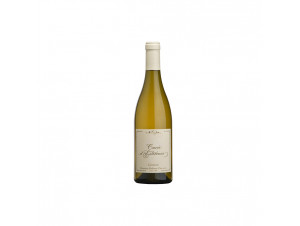You have no items in your shopping cart.
Wine Cairanne
-
Top Selling-20%
-
Top Selling
-
Top Selling
- -20%
- -21%
Cairanne wine dates back to Roman times
Amphorae dating back to Roman times attest to the fact that wine production in Cairanne dates back to very early times. Later, in the 14th century, Pope John XXII had taken the habit of reserving for himself the annual tithe levied in the village, i.e. twelve barrels of vintage.
It was not until 1929 that a small group of vinegrowers worked to preserve the vin du terroir and put in place the first measures to access a controlled appellation. A vigneron de Cairanne, named Rieu, took advantage of the impetus of Baron Le Roy - the originator of the revival of wine appellations in France - to unite behind him all the viticulteurs du terroir.
The idea made its way, slowly, and went through several stages. In 1953, the winegrowers could put the name of Cairanne on their bottles. In 1967, the Côtes du Rhône Villages Cairanne appellation was made official. In June 2016, the provisional appellation d'origine contrôlée was granted and definitively confirmed in June 2018. Cairanne is then finally recognised Cru des Côtes du Rhône.
The vast majority of Cairanne vines produce red wine
The terroir of Cairanne
The Cairanne vineyard covers only the commune of Cairanne. It covers 846 hectares and produces in the 24,000 hectolitres per year, 22% of which is reserved for export.The village of Cairanne is located about 40 kilometres north of Avignon, in the Provence-Alpes-Côte d'Azur region. A stone's throw from the enclave of the Popes, the commune's vineyards stretch across the garrigues and hillsides that border the torrential Aygues river.
To the west of the estate, terraces have been formed by the accumulation of cailloutis, fine sands and clays.The wine of Cairanne owes its freshness and lightness to the sandy substrates that favour the existence of small-grained tannins.
South of the village, the garrigue plateau benefits from generous sunshine and the mistral wind which beats the grapes with vigour. The stony alluvium that has accumulated on fine-grained soils, inherited from the Tertiary age, gives the wine a rounder and warmer taste, very fruity.
To the north, the slopes of the Ventabren mountain are the cradle of wines with more pronounced aromas that evoke spices and fruits. This complexity is due to erosion that has dug into the pile of pebbles, undermining the very present limestone and the rarer flint, alternating with marls.
96% red wine
Cairanne wine is almost exclusively red with 96% of the production. The Grenache dominates with, on its own, 50% of the grape variety. Then come the Mourvèdre and Syrah which share 20% of the terroir. The remaining 30% is dedicated to old Carignan vines and the slightly more acidic Cinsault variety.4% white wine
While it accounts for only 4%, the white wine is nonetheless varied and prized by discerning wine lovers. The Clairette leads with 30%, followed by the White Grenache and Roussanne for 20% each. The last 30 percent is dedicated to Viognier, Bourboulenc, Picpoul and Marsanne.Cairanne wines are built for aging
.The wines of Cairanne are wines for laying down. The reds are imbued with the flavours of stone fruits and are said to have notes of leather and truffles as they age. Their dressing is dense and varied, reminiscent of burlat cherry, deep and bright, but sometimes also garnet or carmine, deeper.
The nose is powerful and elegant, often complex. The aromas of ripe stone fruit such as cherry combine with notes of fresher fruit such as blackcurrant. Depending on the estate, you will find smooth liquorice notes or more roasted and peppery notes.
The attack on the mouth is round and rich, and its final velvety and suave. The palate is always racy and marked by silky tannins.
The Cairanne whites are to be consumed more quickly. Their colour evokes light straw and golden reflections. The nose opens with notes of flowers and white fruits, then develops notes of very ripe yellow fruits. A slight hint of butter and vanilla can often be felt.
The attack in the mouth is round and powerful. The Clairette is fresh, while the Grenache seems denser, when the Roussanne offers the perfect balance.
The perfect pairing of a Cairanne and game
.The red wine of Cairanne will delight lovers of red meat and game. It goes wonderfully with braised or grilled rib of beef. It goes well with mushrooms and more particularly with ceps. For poultry, it goes well with duck breast.
The lightness of the white wine goes perfectly with the aperitif, but also with cheese. It has affinities with goat's cheese with which you would be well inspired to pair it. The white wine of Cairanne is also the ideal partner of white meats and river fish.
The domains to discover in the Cairanne appellation
The Brusset estate
André Brusset founded the estate in 1974 and the family know-how has been passed on from generation to generation ever since. On the 70 hectares of the estate, the Brusset family continues to produce Grenache, Syrah, Mourvèdre, Cinsault and Carignan for the reds; White Grenache, Viognier, Roussanne and Clairette for the white wines.Domaine l'Or de Line
Domaine l'Or de Line made its conversion to organic in 2009. Since then, no synthetic chemicals, weed killers, chemical treatment products or non-organic fertilisers have been used. With a predilection for red wines, in the image of the appellation, the Domaine de l'Or de Line returns to more traditional methods to offer you the best of Cairanne wines.Clairette-de-Die
Côtes du Rhône Villages Suze-la-Rousse
Côtes-du-Rhône Villages Sainte-Cécile
Côtes-du-Rhône-Villages Chusclan
Côtes-du-Rhône-Villages Laudun
Côtes-du-Rhône-Villages Massif-d'Uchaux
Côtes-du-Rhône-Villages Plan-de-Dieu
Côtes-du-Rhône-Villages Rochegude
Côtes-du-Rhône-Villages Sablet
Côtes-du-Rhône-Villages Séguret
Côtes-du-Rhône-Villages Signargues
Vin de Pays des Collines Rhodaniennes
Vin de Pays des Collines Rhodaniennes



































 TWIL - Achat de Vin
TWIL - Achat de Vin


